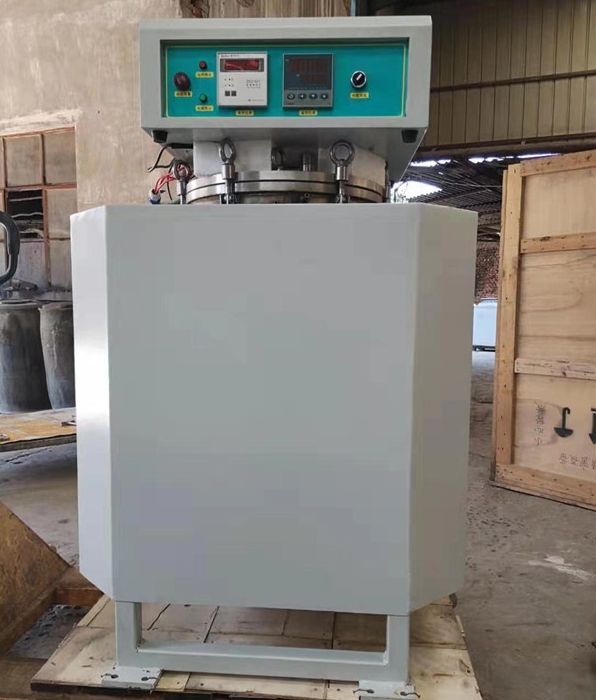- 05
- Jan
Sharing of the sintering process of the vacuum sintering furnace
Sharing of the sintering process of the vacuum sintering furnace
1. Burn-in stage
The first is the delubrication or forming agent stage, which can also be called the pre-sintering stage. At this stage, the temperature should be raised slowly. The decomposition temperature of both the lubricant and the forming agent is about 300°C. Therefore, the temperature should be as slow as possible at about 300°C and have a long enough time to remove the lubricant. The pre-burning stage needs to be kept at a certain temperature for a period of time, the purpose of which is to fully remove the lubricant, and to carry out its own oxidation-reduction reaction. If carbon is contained in the sintered part, a carbon-oxygen reaction will occur above 700°C. The time required for the burn-in phase depends on the amount of lubricant added to the part and the size of the part. The pre-sintering through the pre-sintering stage should allow the lubricant or forming agent to decompose gas and oxygen to be fully eliminated. Whether these gases are fully eliminated can be observed by the degree of vacuum. If the degree of vacuum is stable at a certain value, it means that it has been eliminated.
2. Sintering stage
The temperature set in the sintering stage is the temperature required for sintering. Because vacuum sintering has the effect of activation sintering, its sintering temperature is 50 to 100°C lower than that of atmosphere sintering. If liquid phase sintering is performed, the sintering temperature should be specified at a temperature slightly higher than the melting point of the liquid phase metal. Sintering between powder particles and alloying between alloying elements will occur at this stage. At the same time, an excessively high vacuum degree should not be used at this stage, because the higher the vacuum degree, the greater the loss of liquid metal. In order to reduce the volatilization loss of metals, certain gases such as nitrogen, argon and hydrogen are often filled in sintering.
3. Cooling stage
The cooling of vacuum sintering includes direct power-off cooling or stepwise current reduction cooling, which depends on the cooling requirements. Since it is cooled with the furnace, the cooling rate is slower than that of atmosphere sintering. Filling with protective gas can increase the cooling rate.

1. Burn-in stage
The first is the delubrication or forming agent stage, which can also be called the pre-sintering stage. At this stage, the temperature should be raised slowly. The decomposition temperature of both the lubricant and the forming agent is about 300°C. Therefore, the temperature should be as slow as possible at about 300°C and have a long enough time to remove the lubricant. The pre-burning stage needs to be kept at a certain temperature for a period of time, the purpose of which is to fully remove the lubricant, and to carry out its own oxidation-reduction reaction. If carbon is contained in the sintered part, a carbon-oxygen reaction will occur above 700°C. The time required for the burn-in phase depends on the amount of lubricant added to the part and the size of the part. The pre-sintering through the pre-sintering stage should allow the lubricant or forming agent to decompose gas and oxygen to be fully eliminated. Whether these gases are fully eliminated can be observed by the degree of vacuum. If the degree of vacuum is stable at a certain value, it means that it has been eliminated.
2. Sintering stage
The temperature set in the sintering stage is the temperature required for sintering. Because vacuum sintering has the effect of activation sintering, its sintering temperature is 50 to 100°C lower than that of atmosphere sintering. If liquid phase sintering is performed, the sintering temperature should be specified at a temperature slightly higher than the melting point of the liquid phase metal. Sintering between powder particles and alloying between alloying elements will occur at this stage. At the same time, an excessively high vacuum degree should not be used at this stage, because the higher the vacuum degree, the greater the loss of liquid metal. In order to reduce the volatilization loss of metals, certain gases such as nitrogen, argon and hydrogen are often filled in sintering.
3. Cooling stage
The cooling of vacuum sintering includes direct power-off cooling or stepwise current reduction cooling, which depends on the cooling requirements. Since it is cooled with the furnace, the cooling rate is slower than that of atmosphere sintering. Filling with protective gas can increase the cooling rate.
